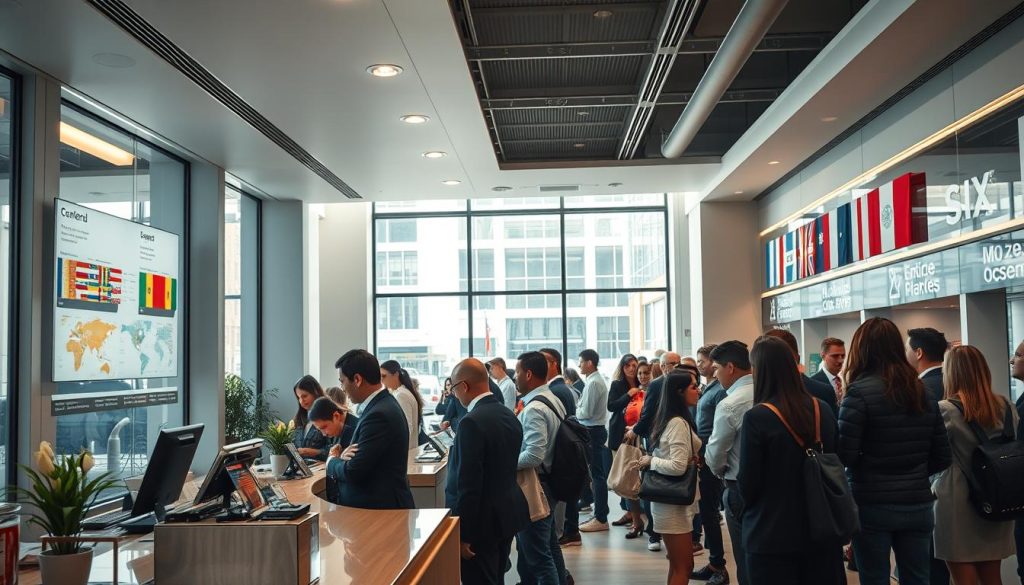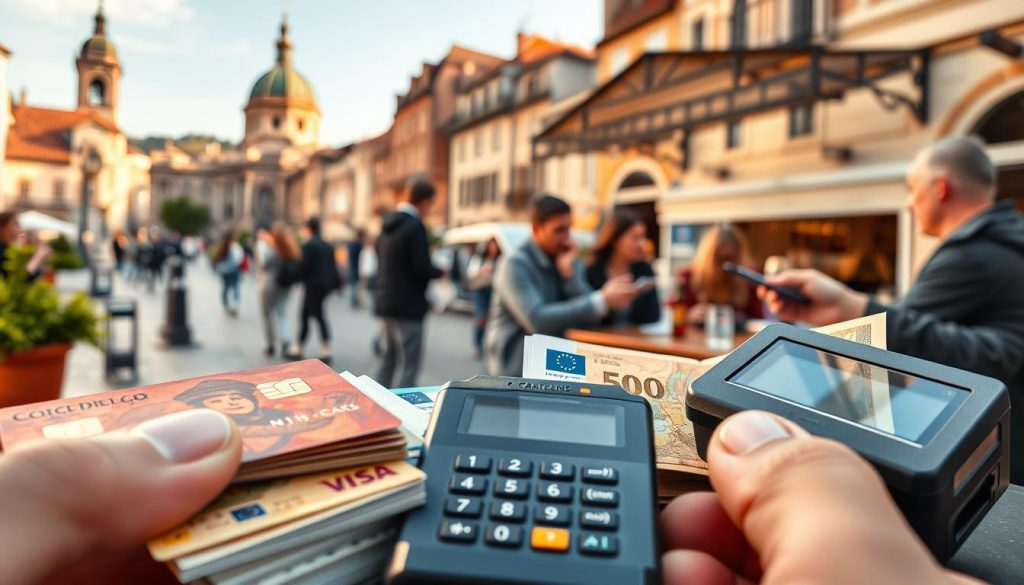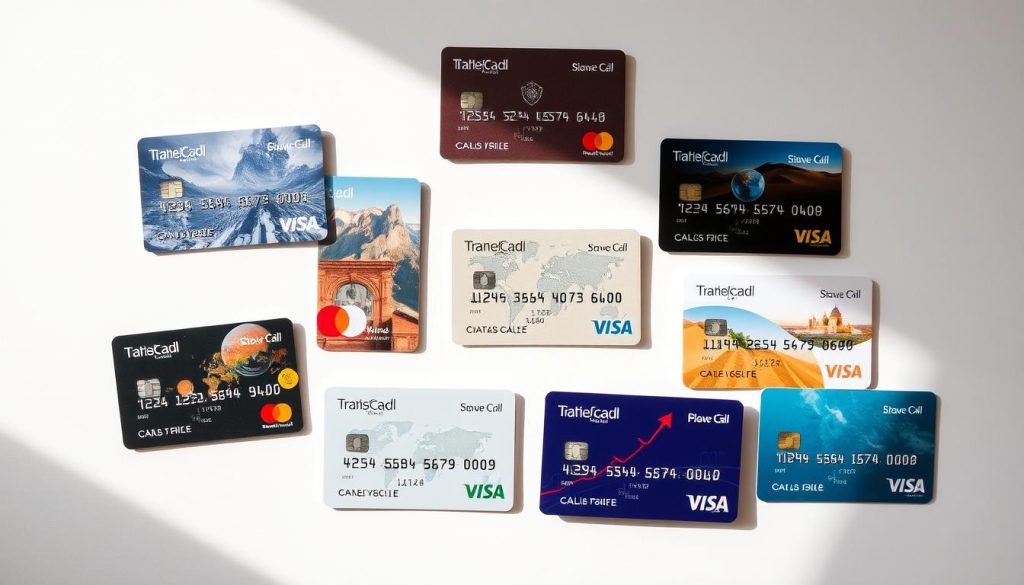✓ Accommodations ✓ Flights ✓ Rental Cars ✓ Tours & Activities
Did you know that exchanging money at airports can cost you up to 15% more than using local banks or online services? Understanding how to manage your finances while traveling can save you time and money. This guide will help you navigate the essentials of currencies and payments for your trip.
Knowing the mid-market exchange rate is crucial. This is the rate banks and major services use, and it’s often better than what you’ll find at airport kiosks. Exchanging your dollars to euros before you arrive can also help you avoid unnecessary fees.
Using a travel card or withdrawing cash from ATMs can be convenient, but be aware of transaction fees. This article covers everything from exchange tips to payment options, ensuring you’re prepared for your journey.
Understanding Currency Exchange in Slovakia
Getting the best exchange rate is key to maximizing your travel budget. The mid-market exchange rate is the rate banks and financial institutions use to trade currencies. It’s the fairest rate you can get, but most exchange services add a markup, increasing your costs.
Live Exchange Rates and Markups
Monitoring live exchange rates is easy with online tools. These tools show the mid-market rate, helping you spot unfair markups. Many services, like airport kiosks, add extra fees, so it’s best to avoid them.
Markups can significantly increase the cost of exchanging money. For example, a 5% markup on a $1,000 exchange adds $50 to your expenses. Always compare rates before making a transaction.
Best Practices for Converting USD to Euro
Converting your dollars to euros before your trip can save you money. Banks and online services often offer better rates than airport kiosks. Carrying some cash in euros is also a good idea for emergencies.
Be cautious of dynamic currency conversion. This option lets you pay in your home currency but often includes hidden fees. Always choose to pay in the local currency to avoid extra costs.
Using a travel card can simplify your transactions. These cards often offer competitive rates and low fees, making them a convenient option for travelers.
Slovakia: Ultimate Travelers Guide to Currencies & Payments
Managing your money wisely can make your trip smoother and more enjoyable. Understanding the best ways to handle currency and payments ensures you stay within your budget and avoid unnecessary fees.
This guide covers everything you need to know about exchange rates, travel cards, and ATM withdrawals. You’ll learn how to choose the right payment methods for different situations, whether you’re dining at a restaurant, shopping at a store, or booking a hotel.

Using a debit card or credit card is convenient, but be aware of foreign transaction fees. Carrying some cash is also a good idea for emergencies, especially in areas where card acceptance is limited.
Here’s a quick comparison of popular payment options:
| Payment Method | Pros | Cons |
|---|---|---|
| Travel Card | Low fees, competitive rates | Requires advance setup |
| Credit Card | Widely accepted, secure | High foreign transaction fees |
| Cash | Accepted everywhere | Risk of loss or theft |
In the next sections, we’ll dive deeper into specific strategies for exchanging money, avoiding extra costs, and choosing the best travel card for your needs. Stay tuned for practical tips to make your trip stress-free!
Tips for Exchanging Money and Avoiding Extra Fees in Slovakia
Exchanging money at the wrong place can drain your travel budget faster than you think. Knowing where and how to convert your cash can save you significant costs. Here’s how to avoid unnecessary fees and get the best rates.
Steer Clear of Airport and Hotel Exchange Providers
Airport and hotel exchange services are convenient but often come with high fees and poor rates. For example, airport kiosks may charge up to 15% more than local banks or online services. Always compare rates before making a transaction.
Instead, use local exchange offices in city centers. These providers often offer competitive rates and lower fees. Major banks like Slovenská Sporiteľňa and Tatra Banka are reliable options for currency exchange.
Beware of Dynamic Currency Conversion
Dynamic currency conversion (DCC) lets you pay in your home currency, but it often includes hidden fees. For instance, choosing to pay in USD instead of euros can inflate your costs by 3-5%. Always opt to pay in the local currency to avoid these charges.
Here’s a quick checklist to save money:
- Avoid airport and hotel exchange providers.
- Use local banks or competitive exchange offices.
- Always choose to pay in the local currency.
- Monitor live exchange rates using online tools.
Preparing in advance by securing favorable exchange rates can make your trip smoother. Carry some cash for emergencies, especially in areas where card acceptance is limited.
Payment Options: Using Cards, Cash & Travel Cards
Choosing the right payment method can make your trip hassle-free and budget-friendly. Whether you prefer cards, cash, or travel cards, each option has its benefits. Let’s explore the best ways to manage your money while traveling.

Advantages of Debit and Credit Cards
Using a debit card or credit card is convenient and widely accepted. Cards are perfect for larger purchases at stores, hotels, and restaurants. They also offer security features like fraud protection, giving you peace of mind.
However, be aware of foreign transaction fees. Some banks charge up to 3% per transaction. To avoid extra costs, look for cards with no or low fees. Many travel-friendly cards, like those from Wise or Revolut, offer competitive rates and minimal charges.
When Carrying Cash Makes Sense
Carrying cash is still a good idea, especially for smaller transactions or tipping. In some areas, card acceptance may be limited, so having euros on hand ensures you’re prepared. It’s also useful for emergencies or places where cards aren’t an option.
For example, local markets or small cafes often prefer cash. Keep a small amount in your wallet and store the rest securely. This way, you’re covered without carrying too much.
Travel cards, like those from Wise or Revolut, combine the best of both worlds. They offer low fees, competitive exchange rates, and the flexibility to manage multiple currencies. Plus, they’re secure and easy to use, making them a popular choice for travelers.
Having multiple payment methods ensures you’re ready for any situation. Whether you’re shopping, dining, or exploring, the right mix of cards and cash can make your trip smoother and more enjoyable.
How to Use International Travel Cards in Slovakia
International travel cards are a smart way to manage your money abroad. They allow you to hold multiple currencies, avoid high fees, and access competitive exchange rates. Whether you’re dining at a restaurant, shopping at a store, or booking a hotel, a travel card can simplify your transactions.
Ordering and Activating Your Travel Card
Ordering a travel card is simple. Most providers, like Wise or Monzo, let you apply online or through their app. You’ll need to verify your identity and provide a mailing address. Delivery times vary, but cards typically arrive within 7-21 days.
Once you receive your card, activate it by following the instructions provided. This usually involves logging into your account and entering a unique code. Activation ensures your card is ready for use.
Topping Up Your Card
You can top up your travel card in your home currency using a bank transfer or debit card. Some cards, like Wise, allow instant conversions to euros or other currencies at the mid-market rate. This helps you lock in favorable exchange rates and avoid extra costs.
Keep an eye on your balance and reload funds as needed. Most apps provide real-time updates, making it easy to manage your budget.
Benefits of Using a Travel Card
Travel cards offer several advantages. They often have low or no foreign transaction fees, saving you money on every purchase. Many cards also provide free ATM withdrawals up to a certain limit, reducing the need to carry cash.
Additionally, travel cards are secure. If your card is lost or stolen, you can freeze it instantly through the app. This gives you peace of mind while traveling.
By using a travel card, you can focus on enjoying your trip without worrying about currency exchange or hidden fees. It’s a convenient and cost-effective way to manage your money abroad.
Comparative Guide to Popular Travel Cards for Slovakia
With so many travel card options, it’s important to choose the one that fits your needs. Whether you’re looking for low fees, competitive exchange rates, or multi-currency support, this guide compares the top providers to help you make an informed decision.

Wise vs. Revolut: Key Features and Fees
Wise is known for its transparent fees and mid-market exchange rates. It allows fee-free spending in currencies you hold and offers some free ATM withdrawals monthly. With a withdrawal limit of 7,000 SGD per month, it’s ideal for frequent travelers.
Revolut, on the other hand, supports multi-currency balances and spending in over 150 countries. It offers fee-free withdrawals up to 400 SGD, with low fees afterward. Both cards are secure, allowing instant freezing if lost or stolen.
Exploring Other Provider Options
If Wise or Revolut doesn’t meet your needs, consider Travelex or Australia Post. Travelex offers prepaid cards with competitive rates, while Australia Post provides a straightforward option for managing travel money. Each has its pros and cons, so weigh them carefully.
Here’s a quick comparison of popular travel cards:
| Provider | Key Features | Fees |
|---|---|---|
| Wise | Fee-free spending, mid-market rates | Low ATM fees after free limit |
| Revolut | Multi-currency, fee-free withdrawals | Low fees after 400 SGD |
| Travelex | Prepaid, competitive rates | Moderate fees |
| Australia Post | Simple, easy to use | Standard fees |
Choosing the right travel card can save you money and make your trip smoother. Compare features, fees, and benefits to find the best fit for your travel style.
Navigating ATMs and Transaction Fees in Slovakia
Withdrawing cash abroad can be tricky, but knowing the right strategies can save you money. ATMs are widely available, but fees and exchange rates can vary. Here’s how to make the most of your withdrawals while keeping costs low.
ATM Withdrawal Tips and Fee-Free Limits
Start by locating ATMs that offer favorable fees. Major banks like Tatra Banka and ČSOB often have lower charges compared to independent ATMs. Using your travel card at partner banks can also help you avoid extra fees.
Many travel cards, such as Wise and Revolut, offer fee-free withdrawals up to a certain limit. For example, Revolut allows free withdrawals up to 400 SGD monthly. Exceeding this limit may incur small fees, so plan your withdrawals accordingly.
Always check for surcharges displayed on the ATM screen before proceeding. Some ATMs charge a flat fee, while others add a percentage of the withdrawal amount. Opt for ATMs that don’t impose additional charges to save money.
How to Avoid Additional Fees
One common mistake is accepting dynamic currency conversion (DCC). This option lets you pay in your home currency but often includes hidden fees. Always choose to withdraw in the local currency to get the best exchange rate.
Withdraw larger amounts less frequently to minimize transaction fees. For instance, taking out 200 euros once is cheaper than withdrawing 50 euros four times. Just be sure to store your cash securely.
Here’s a quick checklist for ATM use abroad:
- Use ATMs at major banks or post offices.
- Check for fee-free limits on your travel card.
- Always withdraw in the local currency.
- Monitor your balance to avoid over-withdrawing.
By following these tips, you can access cash conveniently without breaking the bank. Whether you’re dining at a restaurant or shopping at a store, smart ATM use ensures you stay within your budget.
Practical Travel Tips: Transportation, Accommodation & Dining in Slovakia
Exploring a new country is easier when you know how to get around, where to stay, and what to eat. This guide will help you navigate transportation, find the perfect place to rest, and savor delicious local dishes.
Getting Around: Trains, Buses, and Car Rentals
Traveling within the country is simple with its efficient train and bus systems. Trains connect major cities and tourist destinations, offering a fast and affordable way to explore. Buses are another popular option, with regular services to key locations.
For more flexibility, consider renting a car. This allows you to take scenic routes and visit off-the-beaten-path destinations. Just remember to check local driving rules and have your travel card ready for tolls and fuel payments.

Where to Stay: Hotels, Hostels, and Local Guest Houses
Accommodation options range from luxury hotels to budget-friendly hostels. Major cities like Bratislava and Košice offer modern hotels with easy access to attractions. Hostels are perfect for budget travelers, often located in city centers.
For a unique experience, stay in traditional guest houses or cottages. These are often found in rural areas, offering scenic views and a taste of local culture. Booking in advance is a good idea, especially during peak travel periods.
Savoring Local Cuisine: Must-Try Foods & Drinks
No trip is complete without trying traditional dishes. Start with Bryndzové halušky, a hearty meal made with potato dumplings and sheep cheese. Pair it with Slivovica, a popular plum brandy, for an authentic experience.
Other must-try foods include Kapustnica (sauerkraut soup) and Guláš (meat stew). Many restaurants and bars serve these dishes, making it easy to enjoy local flavors. Don’t forget to explore local markets for fresh ingredients and snacks.
With these tips, you’re ready to make the most of your adventure. Whether you’re hopping on a train, checking into a cozy guest house, or indulging in traditional cuisine, these insights will ensure a smooth and enjoyable trip.
Planning Your Budget: Essential Insights for U.S. Travelers
Planning your budget for an international trip doesn’t have to be stressful. With the right strategies, you can manage your money wisely and enjoy your journey without overspending. This guide will help you navigate your finances abroad, ensuring you stay within your budget and avoid unnecessary fees.
Locking in Exchange Rates
One of the best ways to protect your budget is by locking in favorable exchange rates before your trip. This ensures you get the most value for your money, even if rates fluctuate later. Use online tools or services like Wise to monitor live rates and secure the best deal.
For example, converting your dollars to euros in advance can save you from high fees at airport kiosks. Always compare rates from different providers to avoid hidden charges.
Managing Spending with Travel Cards and Cash
Using a travel card is a convenient way to manage multiple currencies. These cards often offer low fees and competitive exchange rates, making them ideal for international travel. Providers like Revolut also offer budgeting tools to help you track your spending in real time.
Carrying some cash is also a good idea for emergencies or places where cards aren’t accepted. Keep a small amount in your wallet and store the rest securely.
Balancing Expenses
To stay within your budget, plan your expenses for transportation, accommodation, and dining. For example, budget travelers can expect to spend around €56 per day, while mid-range travelers may spend €128. Here’s a breakdown of average costs:
| Category | Budget | Mid-Range | Luxury |
|---|---|---|---|
| Accommodation (per night) | €25 | €59 | €123 |
| Food (per day) | €16 | €38 | €88 |
| Attractions (per day) | €22 | €22 | €22 |
By following these tips, you can make the most of your trip without breaking the bank. Whether you’re exploring cities or enjoying local cuisine, a well-planned budget ensures a stress-free experience.
Conclusion
Making smart financial decisions while traveling ensures a stress-free and enjoyable experience. By planning ahead and comparing exchange rates, you can save money and avoid unnecessary fees. Whether you choose a travel card, cash, or a mix of both, understanding your options is key.
Using tools like mid-market exchange rates and monitoring ATM fees can help you stay within your budget. Travel cards, such as Wise or Revolut, offer low fees and competitive rates, making them a convenient choice for managing your money abroad.
With these insights, you’re ready to explore confidently. Remember, a little preparation goes a long way in ensuring a smooth and enjoyable trip. Happy travels!
The above is subject to change.
Check back often to TRAVEL.COM for the latest travel tips and deals.
Here are some Tours & Sightseeing suggestions that might pique your interests!





